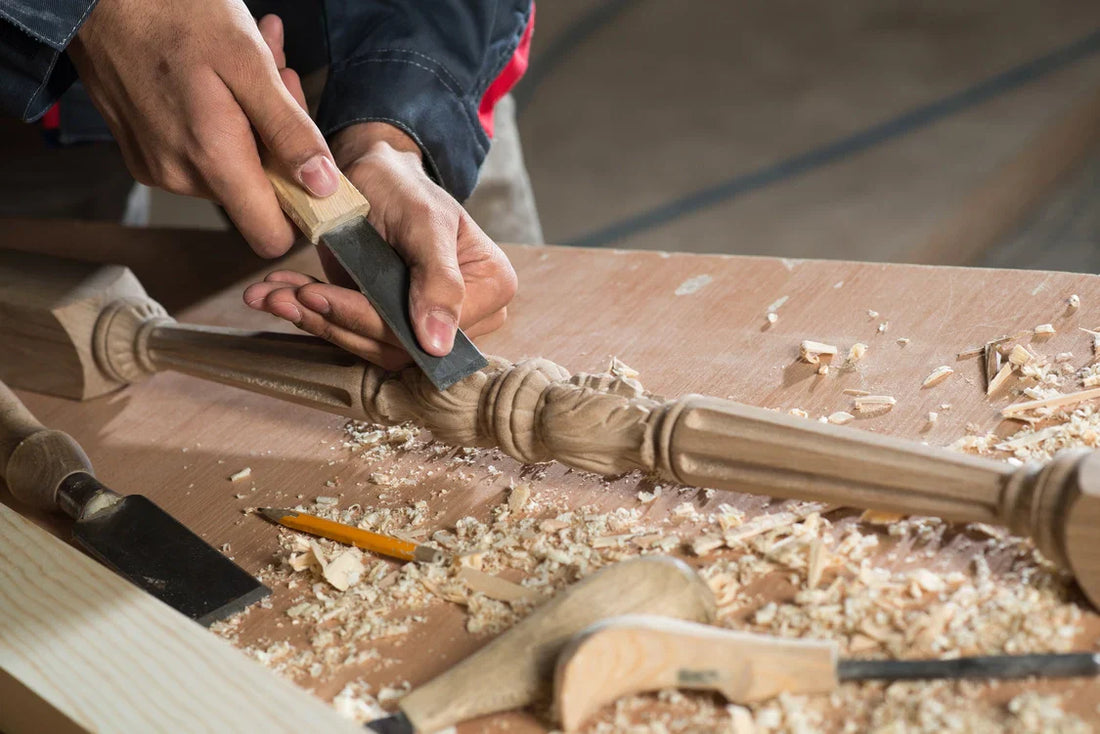Traditional woodworking techniques are a dialogue between generations. Rooted in patience, precision, and quiet mastery, these time-honoured practices have shaped some of the most enduring and beautiful furniture the world has known.
Despite today's world of rapid production, these techniques have not lost their place. They lend structural integrity and a soulfulness to furniture that machines simply cannot replicate.
In this article, House of Chippendale will walk you through the foundational methods that define fine furniture-making. Let us also uncover why these woodworking techniques remain the gold standard in creating heirloom-quality pieces.
Understanding Traditional Woodworking Techniques
Traditional woodworking techniques refer to the timeless practices that rely on hand tools and the maker’s touch to shape wood into lasting works of beauty. Before machines and power tools took over the workshop, furniture was made with quiet intention, using tools as simple as chisels, planes, and mallets.
These techniques draw on history, but are far from outdated. What makes them so enduring is how much they value the character of the material. Compared to modern methods, traditional techniques feel slower but far more personal.
Instead of perfection, they chase integrity, which makes the final look feel alive. This results in furniture that has story, care, and craftsmanship in every line and joint.
Also Read: Woodworking Techniques: An Artful Journey of Style
Key Traditional Woodworking Techniques Explained

Traditional woodworking techniques are quiet rituals, often learned by watching someone else's hands. And somehow, they still hold up in a world of machines and shortcuts.
Let's examine the fundamental methods that give fine wooden furniture life, structure, and soul.
1. Hand Joinery
This is where you will find joints that hold not because of glue or screws, but because of pure craftsmanship. Dovetail joints, for example, lock together in a way that feels almost poetic yet strong, graceful, and precise.
Mortise and tenon joints go way back, yet they are still one of the best ways to keep legs and rails firmly connected. And finger joints become an elegant answer to edges that want to stay together forever.
The real beauty here lies in the time it takes. There is no rushing a proper joint. Every cut and fit is all intentional. You can almost feel the maker’s patience in each corner.
Also Read: World of Chippendale and Mahogany Furniture
2. Carving and Shaping
Once a piece is joined, this is where function meets flair. Carving adds emotion to the piece, sometimes just a soft curve, other times a dramatic flourish.
Unlike the kind etched by machines, it is shaped by instinct and years of practised hands here. Artisans use chisels, mallets, and gouges to bring the surface to life with scrolls, floral motifs, or gentle curves that feel drawn rather than cut.
This process marks a personality. Every carved detail adds warmth, depth, and a human fingerprint that never fades.
3. Hand Planing and Smoothing
Hand planing transforms a surface from good to unforgettable. These traditional woodworking techniques highlight how wood is coaxed into its best form. Unlike sanding, which can feel clinical, planning is intimate. You think the grain responds, shifting from rough to silk-like under your fingers.
It is like listening to the wood, revealing its natural texture, and creating surfaces that invite touch. Once you have felt a hand-planed tabletop, you will notice the difference instantly.
4. Traditional Finishing Methods
Finally, the finish. But not the kind that hides flaws. Traditional finishes, like natural oils, waxes, and shellac, are types of finishes that soak in. They bring out depth and warmth you do not even know was there. And over time, they evolve, becoming richer with every passing year.
The goal here is to let it breathe, age, and become something you will want to pass down, not replace.
The Role of Craftsmanship in Traditional Woodworking

Traditional woodworking techniques have long been the language of craftsmanship, passed from one generation’s hands to the next. Behind every precise joint and smooth surface lies a dialogue between artisan and wood.
These skills were once learned only through apprenticeship, which is shown, corrected, and repeated in quiet workshops. What defines these techniques today is the patience they demand.
Here are the traditional woodworking techniques every master artisan relies on:
-
Hand-planing: Each stroke is intentional, and each surface reflects skill.
-
Joinery: Mortise and tenon, dovetail, dowel—crafted for strength and beauty.
-
Hand finishing: oils and waxes that reveal the wood’s character, not mask it.
-
The rhythm of repetition: Mastery through practice and care.
-
The beauty of imperfection: Subtle marks of the maker’s hand.
Also Read: 4 Wood Joinery Techniques for Exquisite Mahogany Furniture
To truly understand the beauty of traditional woodworking techniques, one must appreciate the devotion behind each detail and the heritage carried through every cut of wood. These methods preserve a lineage of craftsmanship that spans centuries. They remind us that the finest pieces are carefully, lovingly brought to life.
The House of Chippendale continues this legacy with intention and integrity. Our handcrafted mahogany creations are shaped by skilled hands and guided by tradition's quiet wisdom. Each piece celebrates enduring artistry made to last, meant to be cherished.
Explore the art of furniture with soul. With the assistance of our skilled specialist, discover reimagined timeless elegance tailored to your taste.





